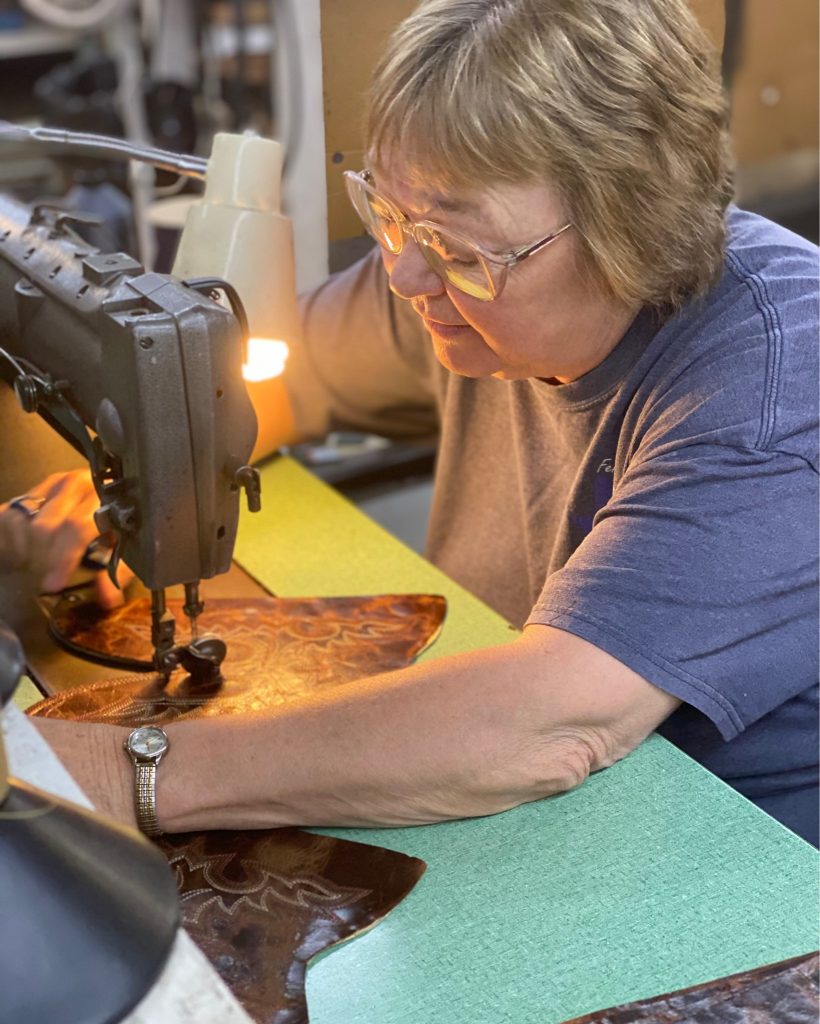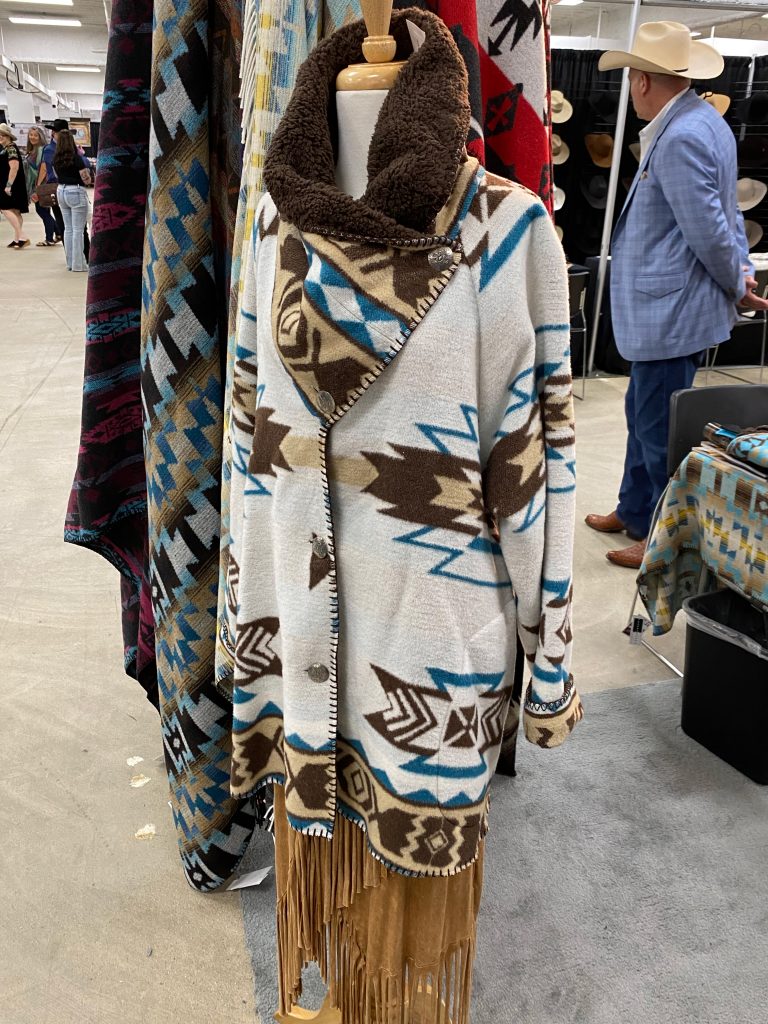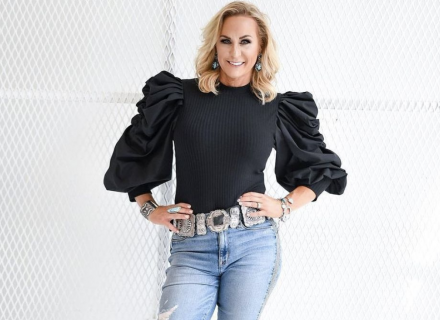Here’s how Western and English retailers are navigating the current global supply chain.
A word of advice for retailers during the ongoing supply chain crisis? Get personal, says Mitzi Fenoglio, CFO of Texas-based Fenoglio Boot Co. “Retailers who have a personal relationship with their suppliers will have an advantage,” she says.
During the pandemic, Fenoglio says the company’s first priority was to protect the health and safety of employees and customers. But as a family-owned business, constant internal communication between business leaders as well as the company’s vendors was also of paramount importance. “I have and will always believe that people want to do business with people and companies they know, like, and can communicate with,” Fenoglio says. “Communicate with your wholesalers to make sure you understand exactly what to expect from them in the months and holidays to come.”
Fenoglio Boot Co.
According to the American Apparel & Footwear Association, the recent supply chain delays are a “shipping crisis.” The association outlined in a recent video that “supply chain workers and consumers are normally linked through an efficient global logistics network made up of factories, freight lines, ports, warehouses, and retailers — but COVID-19 outbreaks, labor shortages, price gouging, excessive fees, and antiquated infrastructure led to a network clogged with delays, high costs, and massive disruption.”
“Fenoglio has always been a domestic production company, which aided us during the pandemic,” Fenoglio says. “However, it did not shield us from the nightmare of having to resource many components needed for manufacturing. With and after 2020, manufacturing is more laborious and will certainly be markedly different for years to come.”
Additionally, Fortune reported that the delays of the past two years have been the result of a host of contributors, from closed factories and ports because of COVID-19, backlogged ships unable to unload freight, and — once unloaded — a lack of truck drivers available to take that freight out across the country.
I have and will always believe that people want to do business with people and companies they know, like, and can communicate with. - Mitzi Fenoglio
In a survey of U.S. consumers in September 2021, Oracle reported that while worries related to the supply chain were increasing because of the current crisis, there are some things retailers can do to help: “People want brands to provide more regular updates about shipping status, be more transparent on inventory and potential supply chain issues, and offer refunds or discounts if items are delayed or cancelled,” the report says.
“These insights paint a clear picture that the ongoing global supply chain issues are impacting many Americans,” Jon S. Chorley, Chief Sustainability Officer and Group Vice President of Supply Chain Management Product Strategy at Oracle, said in a press release. “Ultimately, the supply chain is where brand promises are either met or broken. Organizations that are able to provide the supply chain efficiency and transparency that customers expect will be rewarded with greater customer loyalty and accelerated business growth.”
Rhonda Stark Designs
So, how can Western and English retailers combat supply chain shortfalls and meet the expectations of their customers?
“Retailers need to plan ahead like we try to do,” says Rhonda Stark, owner of Rhonda Stark Designs. “Figure out what your ‘open to buy’ needs are and place your orders. If [retailers] wait to buy late in the season for open stock, they will be too late for their season and [will] probably get little or no goods to sell. This will no doubt lose sales if they do not plan ahead.”
Though Stark offers American-made, cut-to-order pieces for her customers, she sources luxurious fabrics woven in Italy and has experienced supply chain difficulties in importing her fabrics.
“Fortunately, I plan ahead with my Italy [woven] fabric manufacturer and was able to secure a container for shipping. Fabric and shipping took longer than normal due to COVID work restrictions, and especially in the port for delivery to us, which of course costs more money — but we are moving forward,” Stark says, adding that she placed her fabric order for 2022 earlier than normal to keep ahead of delays.
For owner Laura Ingalls of Laura Ingalls Designs, shipping times for some of her own design components have almost doubled.
Laura Ingalls Designs
“For one of my suppliers, because those products come out of Mexico, [shipping] is already at about six months, which [used to be] three to four months, so that’s really slow,” Ingalls says. “Other suppliers, they’re so short-staffed that they’re not that responsive anymore as far as getting back to you. They’re all just wearing more hats and trying to handle all the requests they get.”
Thankfully, Ingalls says business has been booming, and when they have to, her customers have been willing to wait. “I have a couple of suppliers that have been amazing,” Ingalls says. “They’re prompt, right on it, and they haven’t really missed a beat, which is great, but I have to explain to my customers that it’s going to be longer, because I just have to wait for product to come in my parts.”
However, to combat future delays, Ingalls has doubled her own orders so that she doesn’t run out. It’s a risk she says was already paying off as of fall 2021. “I already have orders for [2022], so that’s already a positive,” she says. “I haven’t had that happen before.”
Nevertheless, Ingalls says, retailers who plan better will be in better shape — and many of her retailers have already caught on to this and have made orders stretching into November 2022. Another benefit to that strategy means having that stock for the overall presentation of your store.
“Keep your displays fresh and shoppable,” Ingalls says. “Don’t let the displays get down to just a couple of pieces before replenishing. Consumers like a selection that hasn’t been picked over.”
Fenoglio agrees, and echoes a similar strategy to retailers: “Do not wait. Increase inventory now. It probably will not be there much longer,” she says. Fenoglio advises retailers to explore different and more practical ways to ensure adequate inventory, such as adding styles that are already in stock and that can ship immediately.
Remembering to stay strong and positive is also key, Fenoglio adds. “Keep your head up,” she says. “We are Americans, and we are tough!”
From the January 2022 issue of W&E Today, the ultimate resource for Western retailers from the editors of Cowboys & Indians.
Photography: (All images) courtesy vendors





















